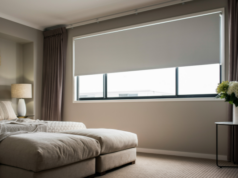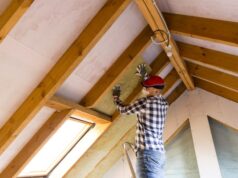
When selecting windows for a new build or renovation, it is essential to consider Australia’s varied climate zones and the latest energy efficiency requirements. The National Construction Code (NCC) now mandates a minimum 7‑star NatHERS rating for all new residential projects.
Windows play a critical role in meeting this standard, and their performance is assessed through the Window Energy Rating Scheme (WERS), which rates the energy efficiency of complete window systems rather than just individual components.
Thermal performance and new expectations
The most important measurement for window insulation is the whole‑window U‑value (Uw). Lower U‑values indicate better thermal insulation. It is also worth considering the frame U‑value (Uf) and glass U‑value (Ug) for a complete picture of performance. The Solar Heat Gain Coefficient (SHGC) remains a key factor in managing how much heat is transmitted through glazing. In hot climates, a low SHGC reduces unwanted heat gain, while in colder climates higher SHGC values may be desirable to capture winter warmth. Low‑E coatings combined with double glazing have become standard across many Australian climate zones, improving insulation and reducing heat transfer.
Window design guidance by climate zone
In hot northern climates, such as Darwin or Brisbane, homeowners should prioritise low‑SHGC glazing to minimise solar heat gain. Operable windows like louvres or casements are recommended for capturing breezes and improving ventilation. Light‑coloured frames and features such as eaves or awnings help prevent overheating.
In mixed climates, including many parts of New South Wales and Victoria, a balanced approach is necessary. The aim is to allow winter sun to penetrate while blocking summer heat. Careful window placement, orientation and shading can help achieve this balance, especially when paired with energy‑efficient glazing.
For colder regions such as Canberra, Tasmania and alpine areas, double glazing with Low‑E coatings is essential. North‑facing windows can help maximise passive solar heating in winter, while minimising east and west‑facing windows reduces unwanted heat loss. Homes with high thermal mass interiors can benefit from larger glazed areas that store heat during the day and release it at night.
Compliance and certification
All new windows must meet Australian Standard AS 2047 for structural and weather performance, and WERS labels are required for energy compliance. In New South Wales, BASIX assessments now include window ratings as part of overall building energy performance. For renovations, particularly in heritage areas, compliance with planning controls is essential. Where original frames cannot be replaced, secondary glazing can provide energy improvements while preserving the building’s appearance.
Materials and sustainability
Sustainable window frame materials are becoming increasingly popular as Australia moves toward net‑zero construction goals. Timber certified by the Forest Stewardship Council (FSC), recycled aluminium, uPVC and fibreglass composite frames are widely available and deliver strong thermal performance. Thermally broken aluminium frames, when paired with high‑performance glass, are an effective way to improve energy efficiency without compromising durability.
Industry initiatives, such as the Australian Glass and Window Association’s simulations across all eight climate zones, highlight the benefits of combining advanced frames with insulated glazing units and Low‑E coatings to achieve higher star ratings under NatHERS.
Orientation, size and passive design
Window orientation continues to be one of the most important considerations for energy performance. Positioning the building along an east–west axis and maximising north‑facing windows provides the best solar access. Cross‑ventilation strategies remain vital in mixed and hot climates, reducing reliance on mechanical cooling. High‑performance glazing now allows for larger window sizes, sometimes up to 20 to 30 per cent of the floor area, although shading and orientation must be carefully planned to maintain efficiency.
Innovation and future trends
While double and triple glazing remain the current standard for energy performance, emerging technologies such as thermochromic and dynamic glazing are beginning to enter the Australian market. These materials change tint in response to temperature or sunlight, potentially reducing both heating and cooling loads. Although not yet common, they represent a promising option for future renovations and builds.
Climate resilience and urban heat
Climate resilience is increasingly influencing window design. In many urban areas, councils are encouraging or mandating lighter roof and window frame colours to mitigate the urban heat island effect. Pairing lighter materials with high‑performance glazing helps reduce heat load in hotter regions and contributes to overall energy savings.
Practical tips for renovators
Homeowners planning renovations should begin with an energy assessment to understand how window performance affects the home’s overall efficiency. Choosing WERS‑rated products ensures compliance and offers peace of mind regarding thermal performance. External shading should be considered for east and west windows, and secondary glazing is a practical option for heritage homes that cannot accommodate full window replacements. Selecting sustainably sourced materials and requesting performance documentation from suppliers are essential steps for environmentally responsible renovations.





